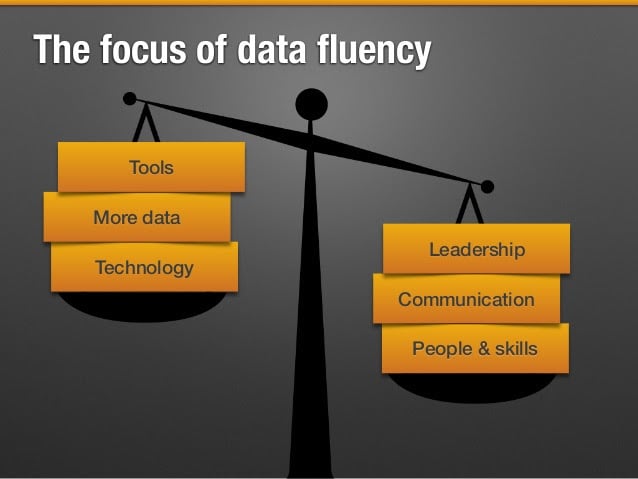“Maybe stories are just a data with a soul.” – Brene Brown
Data has become an inescapable part of working in higher education.
In speaking with student affairs professionals, I’ve noticed that assessment often feels like a burden or an extra piece of administrative work that hinders other job responsibilities. Looking at numbers and reports can often feel meaningless without truly understanding how to dissect them and their impact.
I started this post off with a Brene Brown quote because she was the first person I remember being dubbed a “storyteller” (I think the second person I was made aware of was Lesley D’Souza who holds the title of Manager of Student Affairs Storytelling at Ryerson University).
A storyteller is someone who can make data come to life, someone who is motivated to dig for a deeper meaning. Brown, who deems herself as a qualitative researcher, explains that data and numbers have a soul – and in our case, those numbers, charts, and graphs represent college students’ lived experiences.
How do we use data storytelling in student affairs?
Data storytelling teaches us how to humanize data and structure a data story. Storytelling helps convey why specific data is important to our audience.
Interpretation and analysis of data on college campuses are the bread and butter of understanding student behavior. We can reveal untold stories of the college student experience by grounding student behaviors in data.
Storytelling as a Retention Strategy
Assessment is easier to digest when we think of it as a story and when we truly realize we can make a huge difference in the lives of students through it. Ultimately, we use it as a tool to make better decisions about student and campus life.
Maggie Mulvihill, a Associate Professor of the Practice in Computational Journalism at Boston University who instructs journalism majors to utilize data storytelling explains,
“Data storytelling is the ability to excavate the most compelling information from large datasets and present them to an audience in the most compelling way, so that the message within the story resonates and moves the needle somehow for them.”
Storytelling holds institutional value in many ways. A few institutional offices I immediately think of who can create a large impact on and off campus through data storytelling include Admissions, Enrollment Management, and Marketing & Communications. The individuals who work in these offices have a unique responsibility to communicate stories of campus life effectively and accurately to prospective, current, and alumni students.
Data storytelling can help build a stronger relationship between faculty and student affairs by educating faculty on the student experience and providing context around it. Additionally, data storytelling is key to increasing funding and allocating resources for budgets across departments.
It’s important for professionals at many levels of the institution to be able to understand how to leverage data to inform and persuade stakeholders to adjust campus services to better support students.
Collecting & Analyzing Data
Before we can analyze and communicate stories through data, we must have the tools to collect it. These include, for example, tracking attendance at campus life events and programs, assessing learning outcomes, and using real-time data analytics to understand student behavior.
It’s frustrating for student affairs professionals to see data or know that data is being collected without having access to it or being able to apply it. Sometimes intentionally or unintentionally we lock data behind departmental and technological silos and this restricts professionals from creating the optimal student life experience.
Other challenges to collecting, analyzing, and creating stories with data in student affairs often include:
- Having sufficient data but limited resources to analyze data
- Having too much data and feeling information overload
- Siloing data to one or few departments/offices
- Refraining from outsourcing or adopting new technology to help collect and analyze relevant data
There are many reasons, often convoluted, why these barriers exist, and getting to the root of the problem through data collection and analyzation will help us as an industry move forward to provide better services for students.
Formulating a Data Story
In his TEDxBroadway Talk, Data Storyteller and Professor Ben Wellington shares how big data can tell a story, often many, and how we have a responsibility to pull stories from data.
After New York City created open data laws where anyone with access to the internet could see reports about things like parking tickets and motor vehicle accidents, Ben decided to analyze the data to give feedback to improve city practices.
Although we’re not all experts in data storytelling (yet!), we can take some advice from Ben and change how we approach data.
Convey a few ideas
We can hypothesize and draw conclusions until the cows come home. There are a lot of ideas that we can talk about, but make sure to focus on a few – for example, Ben talks about analyzing gender in data. In student affairs, we could look at gender and/or gender identity in relation to campus programming. What is the percent breakdown of genders at campus programming? On the weekend? During the week? At particular events?
Keep it simple
When we collect too many ideas, we lose focus and lose our audience’s focus particularly when information is presented to a supervisor, leadership, or fellow colleagues. Look at the data, present a story, and take it a step further and explain how it will change the way processes will be improved for the better in one to two proposed goals.
Understand the student experience
It seems as an industry we generalize student behavior (i.e. millennials) and often compare our students to that of other institutions. It’s okay to start with this step, however it’s important we understand student groups and look at the college student experience in a holistic way. We need to take a hard look at various student experiences, why they’re different, and highlight these diverse perspectives. Obtaining a firm grasp on this at a micro level will make it easier to communicate a campus story on a macro level.
Make an impact
Someone is always listening – and even if it doesn’t seem like our message got through, we’ve planted a seed to make people think about a subject in a different way. If people are spending time thinking about what’s discovered or want to continue analyzing data, we’ve made an impact.
Consider the following example:
Recently, I’ve been working to fully understand our company’s social media and marketing metrics (or KPIs, key performance indicators) and how to communicate that data through a story to my supervisor. My supervisor, which most of you know, is an analyst and can pull hundreds of hypotheses out of data. Over the past year, he’s really challenged me to think about data in a different ways and how we can better tell our story via social media as a company.
I realize that through this data, he wants to hear stories. Stories about how we captivate our audience, communicate higher ed trends, increase engagement and much more. He wants to hear the stories he hasn’t heard yet or how they’ve changed, and we both are curious to test hypotheses and explore how to be better in the industry. That’s another piece of presenting data. Through storytelling of data, we can improve our work and make ourselves better practitioners.
Creating a Data Fluent Culture
Big data is determining more and more how we make decisions around events, programs, and practices in higher education. More assessment positions are popping up in student affairs and assessment is continually being added to job responsibilities in all areas.
McKinsey & Company, a global consulting firm, projected that by 2018, there will be more than 490,000 data analysis jobs in the U.S., but a shortage of people trained in the field of data storytelling.
In thinking of the future of higher education (and the past closings of institutions across the U.S.), we need to equip professionals, educators, and students to find and explore data to tell meaningful and impactful student stories. We can focus on developing both data fluency and data literacy to create and strengthen a data fluent campus culture.

Juice Analytics shows in the picture above how we can have all of the technology and data in the world, but we really need a strong culture rooted in effective communication to optimize our efforts.
Building a data fluent culture in student affairs is strengthened by:
- Leaders setting expectations around collecting data and assessing it
- Understanding and sharing metrics around student life practices
- Shared and understood language around data and assessment
- Access to consistent professional development
Your Thoughts!
We’re all storytellers in some way, and need to understand how to adapt this mindset when working closely with data.
These days, student affairs professionals are responsible to track attendance at events and programs, understand if learning outcomes have been met, and connect and build personal relationships with students. We can all utilize data and further understand the benefits through understanding the stories of the humans we support and interact with every day.
And, if we think about it, we all tell stories everyday, not solely rooted in one type of data. We share our triumphs and tribulations and feel comfortable confiding and building stronger relationships with those around us. Isn’t that what our jobs are about anyways? Supporting and lifting each other up?
I encourage us all to think about data a different way. We need to think of it as another way to provide clarity around communicating student stories. We won’t move the needle on assessment as a field until we accurately portray student life on respective campuses. Stories shine light on experiences and inspire. Get ready to tell more of them ?
How have you incorporated storytelling into your student affairs division?
What are some challenges you’ve experienced in collecting and analyzing data?
What other challenges or thoughts do you have when on-boarding your leadership team to assessment projects?
We’d love to hear from you! Tweet us at @themoderncampus and @kayleyrobsham to continue the conversation. Thanks for reading ?
Looking for more assessment and data storytelling resources? Check out these related blog posts below:
The Top 6 Assessment Takeaways From #HigherEdLive ✔︎
Using Involvement Data to Win Over Parents ?
Optimizing Student Life Using Visual Engagement Analytics ?
Stories They Can Feel: Using Data to Make a Real Difference ??





